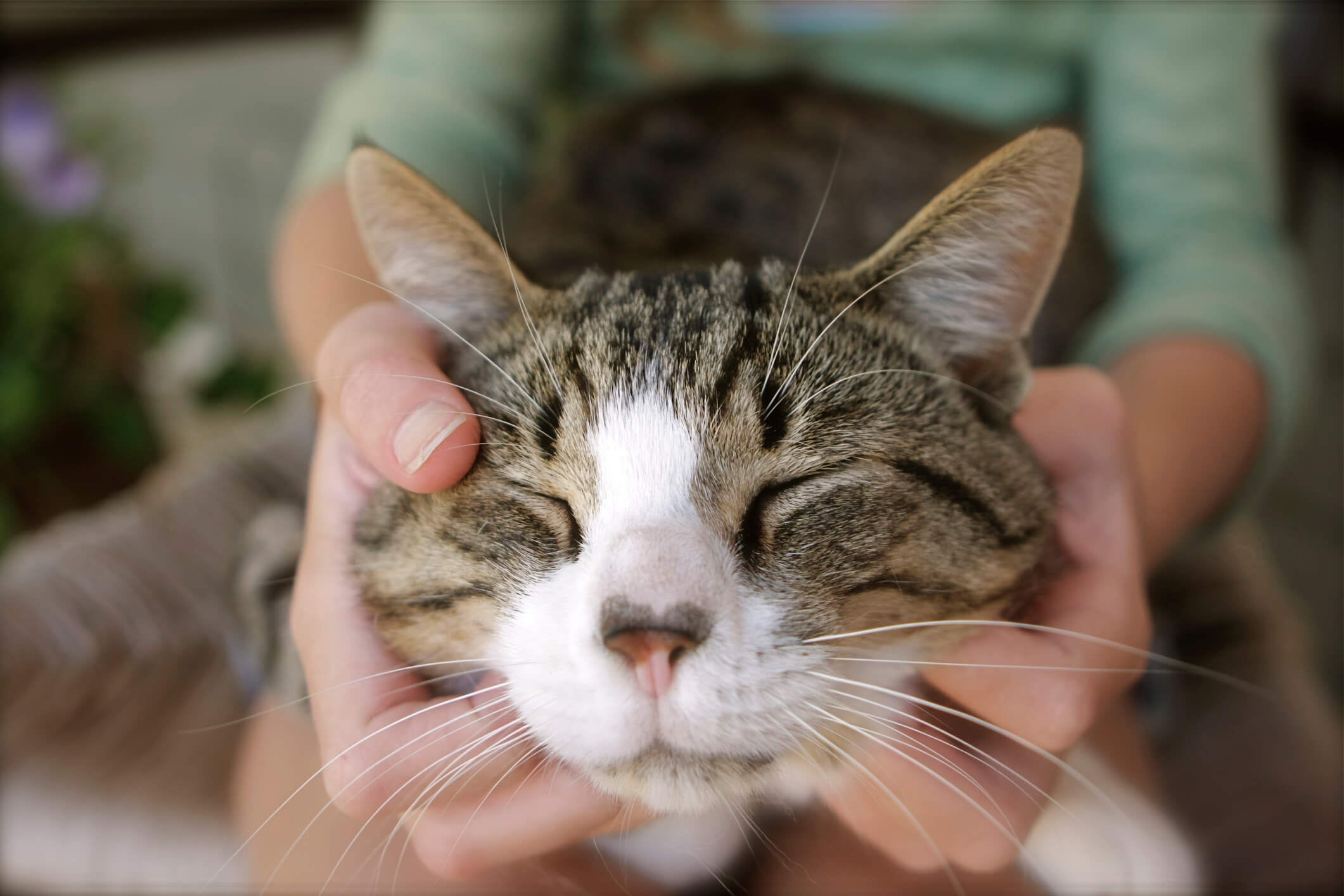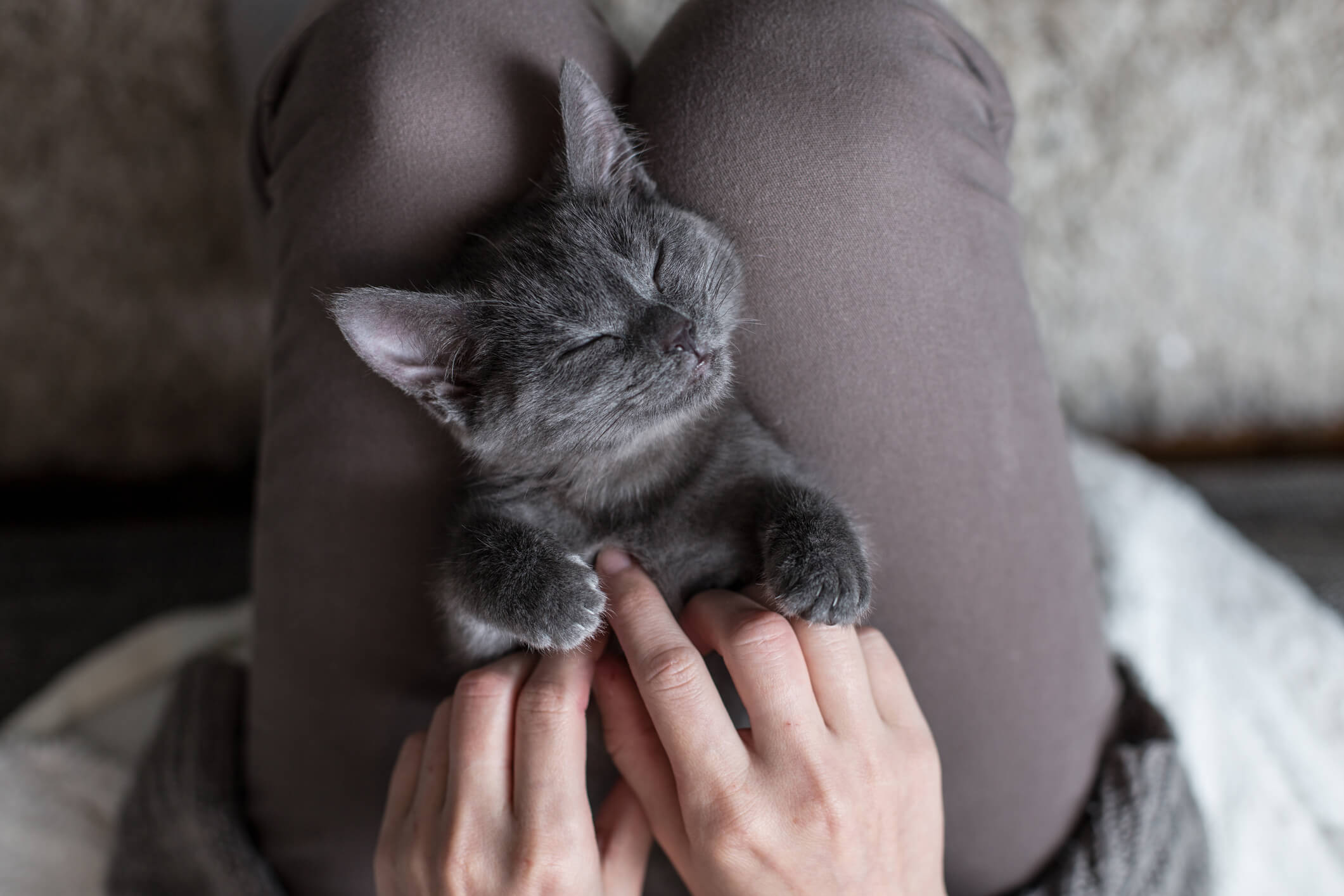
Can Gentle Massage Soothe Anxious Cats?
Some cats love to be rubbed all over, while others prefer to keep their distance. But if your feline friend is suffering from stress and anxiety, a gentle massage might be just what they need to calm down!
Cats who’ve warmed up to their owners tend to be more responsive to massage and can reap multiple benefits, including reduced symptoms of anxiety and better bonding. Check out the following tips to get started.
Benefits of kitty massages
Cats enjoy the same benefits of massage as humans do! First and foremost, massage is a great form of stress relief, particularly for anxious kitties and rescue cats. Your cat might be holding onto trauma from previous owners, abuse, injury or shelter life. Traumatic events lead to a great deal of anxiety, both for owners and cats alike. Once you establish trust, a massage can help your furry friend relax and feel safe in their new home.
Massaging has numerous physical benefits, too. Repetitive circular motions stimulate blood flow and increase oxygen supply to all areas of the body. This can help melt away tension in the muscles, which is a common symptom (and potential source) of stress and anxiety. Additionally, just like humans, cats have a lymphatic system that’s responsible for ridding the body of toxins. Massages activate the lymphatic system, helping blockages pass through each lymph node and reducing inflammation.
Cat massages are great for both feline friends and their owners. Slowly introducing massage into your cat’s daily routine will demonstrate how much you love them and strengthen the bond you two already share. Cats who feel cared for will begin to let their guard down and feel more comfortable in their environment. Any cat owner can tell you how rewarding it is when their furry friends let them go for that tummy rub!

Massage techniques your cat will love
There’s very much a right and wrong way to massage a cat, and many owners have the kitty scratches to prove it. Luckily, there are a few techniques your cat is sure to love. No cat is able to resist a good scratch under the chin, and even the feistiest of felines should start to purr. After a couple minutes, move on to other parts of the head, slowly running your fingers around their ears with light pressure.
Another great target area for massage is the tailbone. You don’t have to be a cat owner to know that the base of the tail is a favorite spot for scratches. Modify your typical invigorating scratch into more of a massaging, circular motion to help your cat feel perfectly zen. Owners can apply more pressure on the tailbone, too—it’s the cat version of a deep tissue massage.
Humans aren’t the only ones who enjoy a good shoulder rub, either! Start at the back of your cat’s neck, and instead of a circular motion, bring your thumb and forefinger together. Be careful not to pinch the cat’s skin too much. Progress downward with this same motion and massage along the outline of their shoulder blades.
Once you’ve mastered these techniques, slowly incorporate more vulnerable spots like the stomach. A cat’s belly requires gentle movements in short amounts before you can extend the time spent on this area. The stomach is a sensitive spot for many cats, and yours might not be into a tummy rub at all. Experiment with different areas and massaging techniques until you discover what your cat likes best.
Know when to take a break
Establishing trust with a cat takes time, so don’t push it. As you experiment with different massage techniques, consistently monitor your cat’s response. If they seem tense, stop massaging and give them the freedom to walk away.
This is especially important when you’re working with a rescue cat who has a hard time trusting humans. Incorporate massages little by little, and if your cat is into it, feel free to enjoy longer massage sessions.

Check with the experts
The last thing any cat owner wants is to make their fur baby upset. If you’re feeling unsure about proper massage techniques, reach out to your veterinarian for tips on how to maximize your kitty’s comfort. Professional guidance can gives owners some peace of mind that their massages are supporting good physical health. And, most importantly, it leads to a happy cat.
Try not to overthink cat massages. When in doubt, go along with the cues from your feline friend. If they seem happy, you must be doing something right! With a little bit of practice, you can reduce your kitty’s stress and look forward to more days filled with bonding time.


